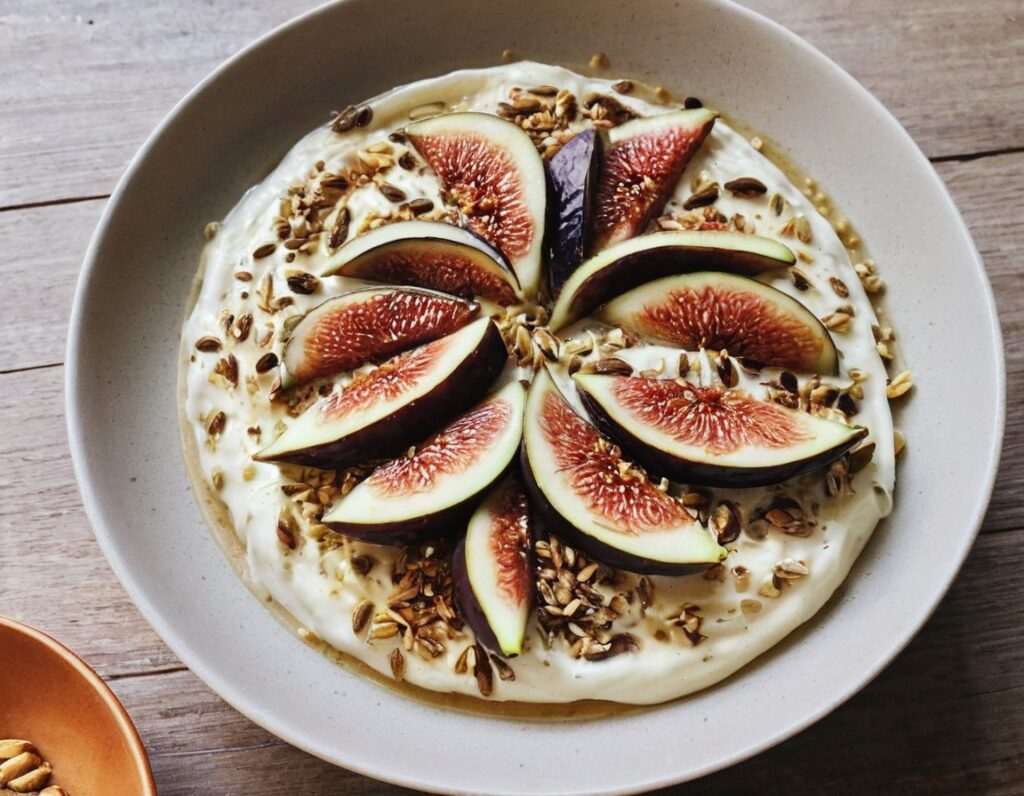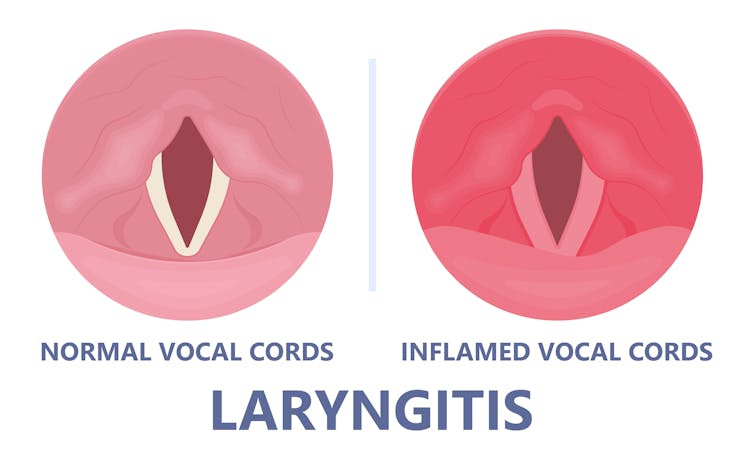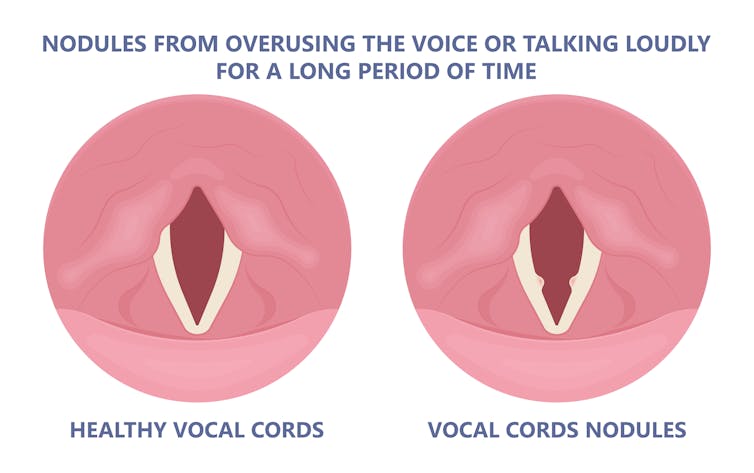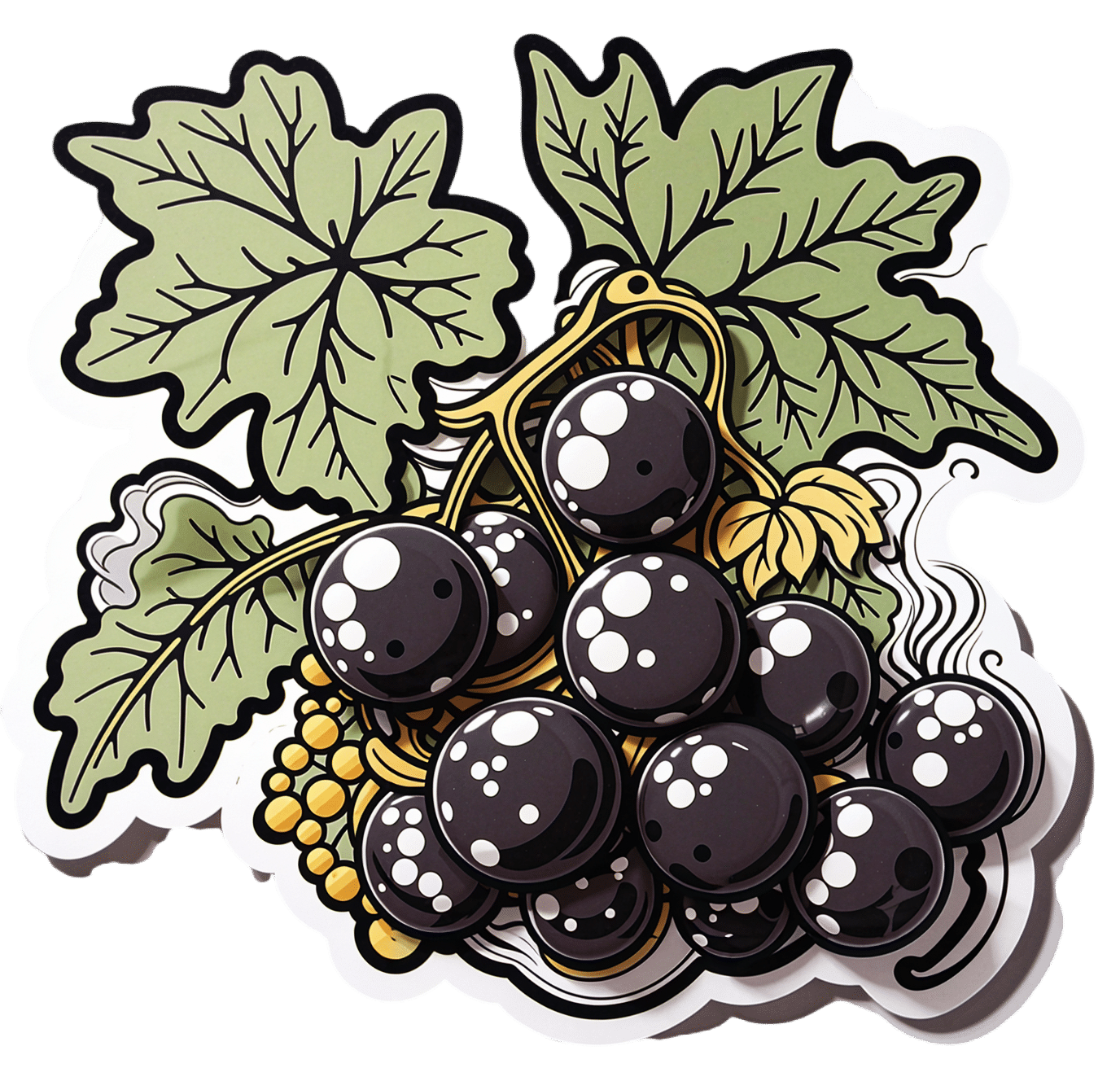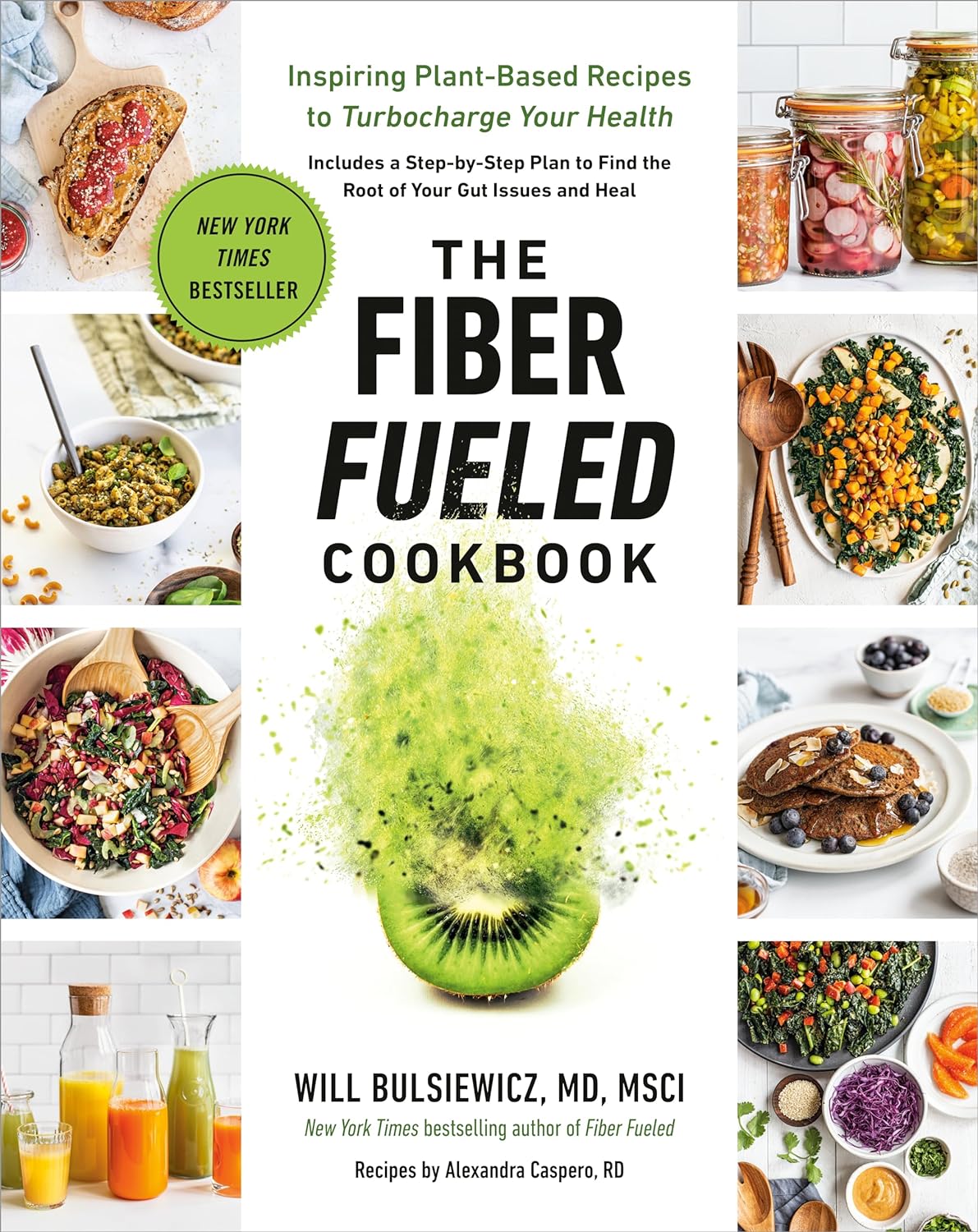
The Fiber Fueled Cookbook – by Dr. Will Bulsiewicz
10almonds is reader-supported. We may, at no cost to you, receive a portion of sales if you purchase a product through a link in this article.
We’ve previously reviewed Dr. Bulsiewicz’s book “Fiber Fuelled” (which is great), but this one is more than just a cookbook with the previous book in mind. Indeed, this is even a great stand-alone book by itself, since it explains the core principles well enough already, and then adds to it.
It’s also about a lot more than just “please eat more fiber”, though. It looks at FODMAPs, purine, histamine intolerance, celiac disease, altered gallbladder function, acid reflux, and more.
He offers a five-part strategy:
Genesis (what is the etiology of your problem)
- Restrict (cut things out to address that first)
- Observe (keep a food/symptom diary)
- Work things back in (re-add potential triggers one by one, see how it goes)
- Train your gut (your microbiome does not exist in a vacuum, and communication is two-way)
- Holistic healing (beyond the gut itself, looking at other relevant factors and aiming for synergistic support)
As for the recipes themselves, there are more than a hundred of them and they are good, so no more “how can I possibly cook [favorite dish] without [removed ingredient]?”
Bottom line: if you’d like better gut health, this book is a top-tier option for fixing existing complaints, and enjoying plain-sailing henceforth.
Click here to check out The Fiber Fueled Cookbook; your gut will thank you later!
Don’t Forget…
Did you arrive here from our newsletter? Don’t forget to return to the email to continue learning!
Recommended
Learn to Age Gracefully
Join the 98k+ American women taking control of their health & aging with our 100% free (and fun!) daily emails:
-
The Gut-Healthiest Yogurt
10almonds is reader-supported. We may, at no cost to you, receive a portion of sales if you purchase a product through a link in this article.
Not only is this yogurt, so it’s winning from the start with its probiotic goodness, but also it’s full of several kinds of fiber, and gut-healthy polyphenols too. Plus, it’s delicious. The perfect breakfast, but don’t let us stop you from enjoying it at any time of day!
You will need
- 1 cup yogurt with minimal additives. Live Greek yogurt is a top-tier choice, and plant-based varieties are fine too (just watch out, again, for needless additives)
- 7 dried figs, roughly chopped
- 6 fresh figs, thinly sliced
- 5 oz chopped pitted dates
- 4 tbsp mixed seeds (pumpkin, sunflower, and chia are a great combination)
Method
(we suggest you read everything at least once before doing anything)
1) Soak the dried figs, the dates, and half the seeds in hot water for at least 5 minutes. Drain (be careful not to lose the chia seeds) and put in a blender with ¼ cup cold water.
2) Blend the ingredients from the last step into a purée (you can add a little more cold water if it needs it).
3) Mix this purée into the yogurt in a bowl, and add in the remaining seeds, mixing them in thoroughly.
4) Top with the sliced figs, and serve (or refrigerate, up to a few days, until needed).
Enjoy!
Want to learn more?
For those interested in some of the science of what we have going on today:
- Making Friends With Your Gut (You Can Thank Us Later)
- Dates vs Figs – Which is Healthier?
- The Tiniest Seeds With The Most Value
Take care!
Share This Post
-
Water’s Counterintuitive Properties
10almonds is reader-supported. We may, at no cost to you, receive a portion of sales if you purchase a product through a link in this article.
It’s Q&A Day at 10almonds!
Have a question or a request? We love to hear from you!
In cases where we’ve already covered something, we might link to what we wrote before, but will always be happy to revisit any of our topics again in the future too—there’s always more to say!
As ever: if the question/request can be answered briefly, we’ll do it here in our Q&A Thursday edition. If not, we’ll make a main feature of it shortly afterwards!
So, no question/request too big or small
❝Why are we told to drink more water for everything, even if sometimes it seems like the last thing we need? Bloated? Drink water. Diarrhea? Drink water. Nose running like a tap? Drink water❞
While water will not fix every ill, it can fix a lot, or at least stop it from being worse!
Our bodies are famously over 60% water (exact figure will depend on how well-hydrated you are, obviously, as well as your body composition in terms of muscle and fat). Our cells (which are mostly full of mostly water) need replacing all the time, and almost everything that needs transporting almost anywhere is taken there by blood (which is also mostly water). And if we need something moving out of the body? Water is usually going to be a large part of how it gets ejected.
In the cases of the examples you gave…
- Bloating: bloating is often a matter of water retention, which often happens as a result of having too much salt, and/or sometimes too much fat. So the body’s homeostatic system (the system that tries to maintain all kinds of equilibrium, keeping salt balance, temperature, pH, and many other things in their respective “Goldilocks zones”) tries to add more water to where it’s needed to balance out the salt etc.
- Consequently, drinking more water means the body will note “ok, balance restored, no need to keep retaining water there, excess salts being safely removed using all this lovely water”.
- Diarrhea: this is usually a case of a bacterial infection, though there can be other causes. Whether for that reason or another, the body has decided that it needs to give your gut an absolute wash-out, and it can only do that from the inside—so it uses as much of the body’s water as it needs to do that.
- Consequently, drinking more water means that you are replenishing the water that the body has already 100% committed to using. If you don’t drink water, you’ll still have diarrhea, you’ll just start to get dangerously dehydrated.
- Runny nose: this is usually a case of either fighting a genuine infection, or else fighting something mistaken for a pathogen (e.g. pollen, or some other allergen). The mucus is an important part of the body’s defense: it traps the microbes (be they bacteria, virus, whatever) and water-slides them out of the body.
- Consequently, drinking more water means the body can keep the water-slide going. Otherwise, you’ll just get gradually more dehydrated (because as with diarrhea, your body will prioritize this function over maintaining water reserves—water reserves are there to be used if necessary, is the body’s philosophy) and if the well runs dry, you’ll just be dehydrated and have a higher pathogen-count still in your body.
Some previous 10almonds articles that might interest you:
- Hydration Mythbusting
- When To Take Electrolytes (And When We Shouldn’t!)
- Keeping Your Kidneys Healthy (Especially After 60)
Would you like this section to be bigger? If so, send us more questions!
Share This Post
- Bloating: bloating is often a matter of water retention, which often happens as a result of having too much salt, and/or sometimes too much fat. So the body’s homeostatic system (the system that tries to maintain all kinds of equilibrium, keeping salt balance, temperature, pH, and many other things in their respective “Goldilocks zones”) tries to add more water to where it’s needed to balance out the salt etc.
-
Oat Milk vs Almond Milk – Which is Healthier?
10almonds is reader-supported. We may, at no cost to you, receive a portion of sales if you purchase a product through a link in this article.
Our Verdict
When comparing oat milk to almond milk, we picked the almond milk.
Why?
This one’s quite straightforward, and no, it’s not just our bias for almonds
Rather, almonds contain a lot more vitamins and minerals, all of which usually make it into the milk.
Oat milk is still a fine choice though, and has a very high soluble fiber content, which is great for your heart.
Just make sure you get versions without added sugar or other unpleasantries! You can always make your own at home, too.
You can read a bit more about the pros and cons of various plant milks here:
Enjoy!
Share This Post
Related Posts
-
I’ve recovered from a cold but I still have a hoarse voice. What should I do?
10almonds is reader-supported. We may, at no cost to you, receive a portion of sales if you purchase a product through a link in this article.
Cold, flu, COVID and RSV have been circulating across Australia this winter. Many of us have caught and recovered from one of these common upper respiratory tract infections.
But for some people their impact is ongoing. Even if your throat isn’t sore anymore, your voice may still be hoarse or croaky.
So what happens to the voice when we get a virus? And what happens after?
Here’s what you should know if your voice is still hoarse for days – or even weeks – after your other symptoms have resolved.
Why does my voice get croaky during a cold?
A healthy voice is normally clear and strong. It’s powered by the lungs, which push air past the vocal cords to make them vibrate. These vibrations are amplified in the throat and mouth, creating the voice we hear.
The vocal cords are two elastic muscles situated in your throat, around the level of your laryngeal prominence, or Adam’s apple. (Although everyone has one, it tends to be more pronounced in males.) The vocal cords are small and delicate – around the size of your fingernail. Any small change in their structure will affect how the voice sounds.
When the vocal cords become inflamed – known as laryngitis – your voice will sound different. Laryngitis is a common part of upper respiratory tract infections, but can also be caused through misuse.
Viruses such as the common cold can inflame the vocal cords. Pepermpron/Shutterstock Catching a virus triggers the body’s defence mechanisms. White blood cells are recruited to kill the virus and heal the tissues in the vocal cords. They become inflamed, but also stiffer. It’s harder for them to vibrate, so the voice comes out hoarse and croaky.
In some instances, you may find it hard to speak in a loud voice or have a reduced pitch range, meaning you can’t go as high or loud as normal. You may even “lose” your voice altogether.
Coughing can also make things worse. It is the body’s way of trying to clear the airways of irritation, including your own mucus dripping onto your throat (post-nasal drip). But coughing slams the vocal cords together with force.
Chronic coughing can lead to persistent inflammation and even thicken the vocal cords. This thickening is the body trying to protect itself, similar to developing a callus when a pair of new shoes rubs.
Thickening on your vocal cords can lead to physical changes in the vocal cords – such as developing a growth or “nodule” – and further deterioration of your voice quality.
Coughing and exertion can cause inflamed vocal cords to thicken and develop nodules. Pepermpron/Shutterstock How can you care for your voice during infection?
People who use their voices a lot professionally – such as teachers, call centre workers and singers – are often desperate to resume their vocal activities. They are more at risk of forcing their voice before it’s ready.
The good news is most viral infections resolve themselves. Your voice is usually restored within five to ten days of recovering from a cold.
Occasionally, your pharmacist or doctor may prescribe cough suppressants to limit additional damage to the vocal cords (among other reasons) or mucolytics, which break down mucus. But the most effective treatments for viral upper respiratory tract infections are hydration and rest.
Drink plenty of water, avoid alcohol and exposure to cigarette smoke. Inhaling steam by making yourself a cup of hot water will also help clear blocked noses and hydrate your vocal cords.
Rest your voice by talking as little as possible. If you do need to talk, don’t whisper – this strains the muscles.
Instead, consider using “confidential voice”. This is a soft voice – not a whisper – that gently vibrates your vocal cords but puts less strain on your voice than normal speech. Think of the voice you use when communicating with someone close by.
During the first five to ten days of your infection, it is important not to push through. Exerting the voice by talking a lot or loudly will only exacerbate the situation. Once you’ve recovered from your cold, you can speak as you would normally.
What should you do if your voice is still hoarse after recovery?
If your voice hasn’t returned to normal after two to three weeks, you should seek medical attention from your doctor, who may refer you to an ear nose and throat specialist.
If you’ve developed a nodule, the specialist would likely refer you to a speech pathologist who will show you how to take care of your voice. Many nodules can be treated with voice therapy and don’t require surgery.
You may have also developed a habit of straining your vocal cords, if you forced yourself to speak or sing while they were inflamed. This can be a reason why some people continue to have a hoarse voice even when they’ve recovered from the cold.
In those cases, a speech pathologist may play a valuable role. They may teach you to exercises that make voicing more efficient. For example, lip trills (blowing raspberries) are a fun and easy way you can learn to relax the voice. This can help break the habit of straining your voice you may have developed during infection.
Yeptain Leung, Postdoctoral Research and Lecturer of Speech Pathology, School of Health Sciences, The University of Melbourne
This article is republished from The Conversation under a Creative Commons license. Read the original article.
Don’t Forget…
Did you arrive here from our newsletter? Don’t forget to return to the email to continue learning!
Learn to Age Gracefully
Join the 98k+ American women taking control of their health & aging with our 100% free (and fun!) daily emails:
-
Eat All You Want (But Wisely)
10almonds is reader-supported. We may, at no cost to you, receive a portion of sales if you purchase a product through a link in this article.
Some Surprising Truths About Hunger And Satiety
This is Dr. Barbara Rolls. She’s Professor and Guthrie Chair in Nutritional Sciences, and Director of the Laboratory for the Study of Human Ingestive Behavior at Pennsylvania State University, after graduating herself from Oxford and Cambridge (yes, both). Her “awards and honors” take up four A4 pages, so we won’t list them all here.
Most importantly, she’s an expert on hunger, satiety, and eating behavior in general.
What does she want us to know?
First and foremost: you cannot starve yourself thin, unless you literally starve yourself to death.
What this is about: any weight lost due to malnutrition (“not eating enough” is malnutrition) will always go back on once food becomes available. So unless you die first (not a great health plan), merely restricting good will always result in “yo-yo dieting”.
So, to avoid putting the weight back on and feeling miserable every day along the way… You need to eat as much as you feel you need.
But, there’s a trick here (it’s about making you genuinely feel you need less)!
Your body is an instrument—so play it
Your body is the tool you use to accomplish pretty much anything you do. It is, in large part, at your command. Then there are other parts you can’t control directly.
Dr. Rolls advises taking advantage of the fact that much of your body is a mindless machine that will simply follow instructions given.
That includes instructions like “feel hungry” or “feel full”. But how to choose those?
Volume matters
An important part of our satiety signalling is based on a physical sensation of fullness. This, by the way, is why bariatric surgery (making a stomach a small fraction of the size it was before) works. It’s not that people can’t eat more (the stomach is stretchy and can also be filled repeatedly), it’s that they don’t want to eat more because the pressure sensors around the stomach feel full, and signal the hormone leptin to tell the brain we’re full now.
Now consider:
- On the one hand, 20 grapes, fresh and bursting with flavor
- On the other hand, 20 raisins (so, dried grapes), containing the same calories
Which do you think will get the leptin flowing sooner? Of course, the fresh grapes, because of the volume.
So if you’ve ever seen those photos that show two foods side by side with the same number of calories but one is much larger (say, a small slice of pizza or a big salad), it’s not quite the cheap trick that it might have appeared.
Or rather… It is a cheap trick; it’s just a cheap trick that works because your stomach is quite a simple organ.
So, Dr. Rolls’ advice: generally speaking, go for voluminous food. Fruit is great from this, because there’s so much water. Air-popped popcorn also works great. Vegetables, too.
Water matters, but differently than you might think
A well-known trick is to drink water before and with a meal. That’s good, it’s good to be hydrated. However, it can be better. Dr. Rolls did an experiment:
The design:
❝Subjects received 1 of 3 isoenergetic (1128 kJ) preloads 17 min before lunch on 3 d and no preload on 1 d.
The preloads consisted of 1) chicken rice casserole, 2) chicken rice casserole served with a glass of water (356 g), and 3) chicken rice soup.
The soup contained the same ingredients (type and amount) as the casserole that was served with water.❞
The results:
❝Decreasing the energy density of and increasing the volume of the preload by adding water to it significantly increased fullness and reduced hunger and subsequent energy intake at lunch.
The equivalent amount of water served as a beverage with a food did not affect satiety.❞
The conclusion:
❝Consuming foods with a high water content more effectively reduced subsequent energy intake than did drinking water with food.❞
You can read the study in full (it’s a worthwhile read!) here:
Water incorporated into a food but not served with a food decreases energy intake in lean women
Protein matters
With all those fruits and vegetables and water, you may be wondering Dr. Rolls’ stance on proteins. It’s simple: protein is an appetite suppressant.
However, it takes about 20 minutes to signal the brain about that, so having some protein in a starter (if like this writer, you’re the cook of the household, a great option is to enjoy a small portion of nuts while cooking!) gets that clock ticking, to signal satiety sooner.
It may also help in other ways:
Clinical Evidence and Mechanisms of High-Protein Diet-Induced Weight Loss
As for other foods that can suppress appetite, by the way, you might like;
25 Foods That Act As Natural Appetite Suppressants
Variety matters, and in ways other than you might think
A wide variety of foods (especially: a wide variety of plants) in one’s diet is well recognized as a key to a good balanced diet.
However…
A wide variety of dishes at the table, meanwhile, promotes greater consumption of food.
Dr. Rolls did a study on this too, a while ago now (you’ll see how old it is) but the science seems robust:
Variety in a Meal Enhances Food Intake in Man
Notwithstanding the title, it wasnot about a man (that was just how scientists wrote in ye ancient times of 1981). The test subjects were, in order: rats, cats, a mixed group of men and women, the same group again, and then a different group of all women.
So, Dr. Rolls’ advice is: it’s better to have one 20-ingredient dish, than 10 dishes with 20 ingredients between them.
Sorry! We love tapas and buffets too, but that’s the science!
So, “one-pot” meals are king in this regard; even if you serve it with one side (reasonable), that’s still only two dishes, which is pretty good going.
Note that the most delicious many-ingredient stir-fries and similar dishes from around the world also fall into this category!
Want to know more?
If you have the time (it’s an hour), you can enjoy a class of hers for free:
Want to watch it, but not right now? Bookmark it for later
Enjoy!
Don’t Forget…
Did you arrive here from our newsletter? Don’t forget to return to the email to continue learning!
Learn to Age Gracefully
Join the 98k+ American women taking control of their health & aging with our 100% free (and fun!) daily emails:
-
Food for Thought – by Lorraine Perretta
10almonds is reader-supported. We may, at no cost to you, receive a portion of sales if you purchase a product through a link in this article.
What are “brain foods”? If you think for a moment, you can probably list a few. What this book does is better.
As well as providing the promised 50 recipes (which themselves are varied, good, and easy), Perretta explains the science of very many brain-healthy ingredients. Not just that, but also the science of a lot of brain-unhealthy ingredients. In the latter case, probably things you already knew to stay away from, but still, it’s a good reminder of one more reason why.
Nor does she merely sort things into brain-healthy (or brain-unhealthy, or brain-neutral), but rather she gives lists of “this for memory” and “this against depression” and “this for cognition” and “this against stress” and so forth.
Perhaps the greatest value of this book is in that; her clear explanations with science that’s simplified but not dumbed down. The recipes are definitely great too, though!
Bottom line: if you’d like to eat more for brain health, this book will give you many ways of doing so
Click here to check out Food for Thought, and upgrade your recipes!
Don’t Forget…
Did you arrive here from our newsletter? Don’t forget to return to the email to continue learning!
Learn to Age Gracefully
Join the 98k+ American women taking control of their health & aging with our 100% free (and fun!) daily emails:



